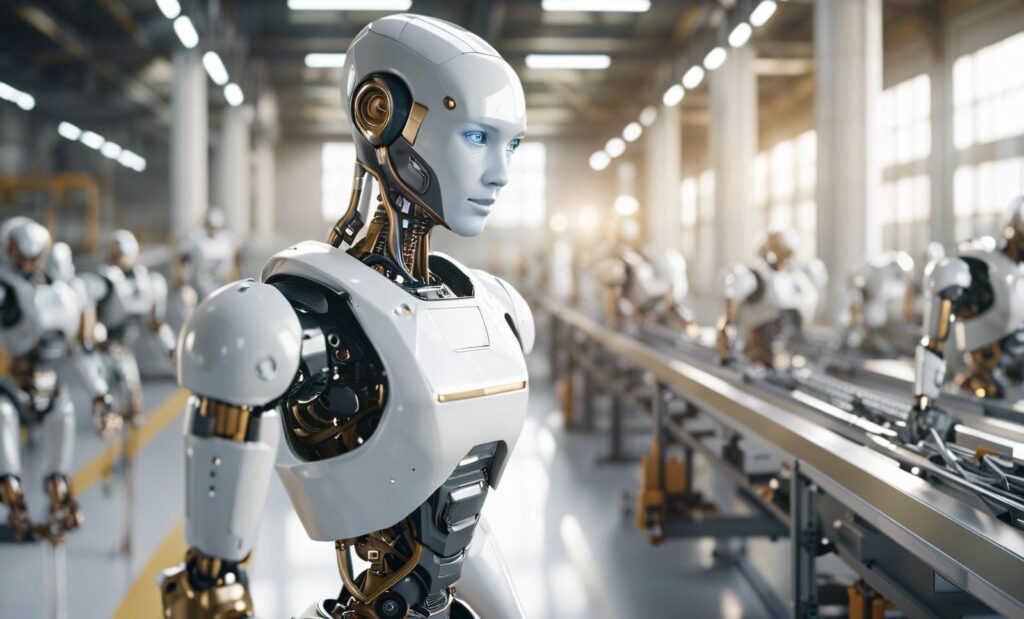Humanoid robots, once a vision of science fiction, are rapidly becoming a reality across industries such as e-commerce and manufacturing. Recent advances in artificial intelligence, battery technology, and mobility have enabled companies to deploy human-shaped robots capable of performing complex tasks previously handled only by humans. The humanoid robots industry is poised to transform automation, efficiency, and workforce dynamics worldwide.
Agility Robotics is among the pioneers in this field. Its humanoid robots are designed to navigate warehouses and factory floors, carrying goods, assembling parts, and performing repetitive tasks with precision and reliability. Unlike traditional robotic arms, these robots are fully mobile, capable of climbing stairs, opening doors, and adapting to dynamic environments. This flexibility allows them to work alongside human employees safely and efficiently.
Major technology corporations are also heavily investing in humanoid robotics. Amazon has explored robots for warehouse logistics, while Meta and Google are developing robots for research, service applications, and industrial use. These investments signal the growing confidence in humanoid robots as transformative tools for the global economy.
One of the key drivers of this shift is AI. Machine learning algorithms enable humanoid robots to perceive their surroundings, make decisions, and improve performance over time. AI allows them to recognize objects, navigate obstacles, and optimize task execution, significantly reducing errors and increasing productivity. Combined with longer-lasting batteries and improved actuators, humanoid robots can operate for extended periods without human intervention.
The impact on the humanoid robots industry extends beyond efficiency. In warehouses and factories, robots reduce the physical strain on human workers, minimizing injuries and improving workplace safety. By taking over repetitive or hazardous tasks, these robots allow employees to focus on higher-value responsibilities, such as quality control, supervision, and problem-solving.
Industry analysts note that the widespread adoption of humanoid robots could reshape labor markets. While automation may reduce the demand for certain manual roles, it also creates opportunities for robotics engineers, AI specialists, and technicians skilled in maintaining and programming these machines. Companies that invest in humanoid robotics are likely to see productivity gains while fostering a technologically advanced workforce.
The potential applications of humanoid robots are expanding rapidly. Beyond e-commerce and manufacturing, they may soon assist in healthcare, logistics, construction, and customer service. Robots could deliver medical supplies in hospitals, assemble intricate machinery, or interact with customers in retail spaces. As mobility, dexterity, and AI capabilities improve, humanoid robots are expected to integrate seamlessly into everyday operations across multiple sectors.
Investment trends reflect the confidence in the market. Venture capital and corporate funding for humanoid robotics have surged in recent years, with startups and tech giants racing to develop the next generation of intelligent machines. Analysts predict that the humanoid robots industry could reach multi-billion-dollar valuations within the next decade, driven by innovation, scalability, and growing demand for automation.
Challenges remain, including safety, ethical considerations, and public acceptance. Companies are working to ensure that humanoid robots can operate safely alongside humans, with sensors, AI safeguards, and regulatory compliance guiding deployment. Public trust and clear communication about the role of robots in the workplace are also critical to widespread adoption.
Looking ahead, the humanoid robots industry is expected to expand at a rapid pace. Advances in AI, battery technology, and mobility will continue to enhance capabilities, while collaborations between tech firms and industrial partners will accelerate practical deployment. For industries ranging from e-commerce to automotive manufacturing, humanoid robots represent a new frontier in productivity, safety, and innovation.
Humanoid robots are no longer a distant dream—they are here, transforming the way work is done. With AI-driven intelligence, adaptability, and human-like form, these robots are set to redefine automation, empowering industries to operate smarter, safer, and more efficiently than ever before.


